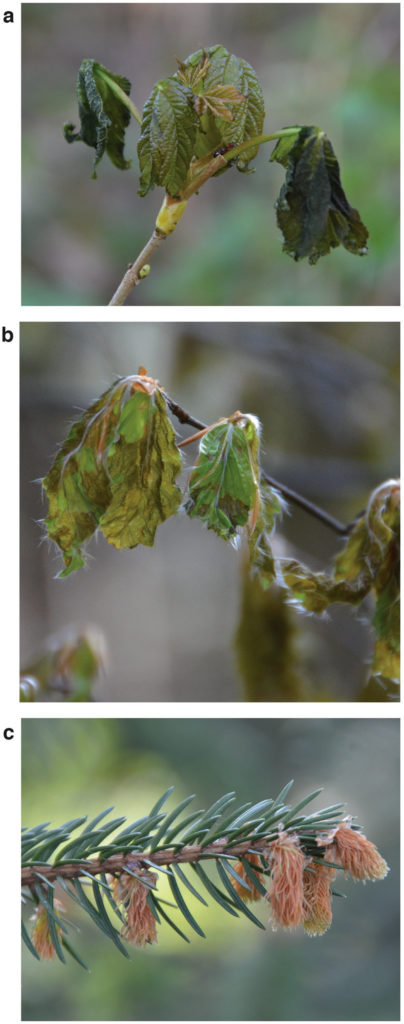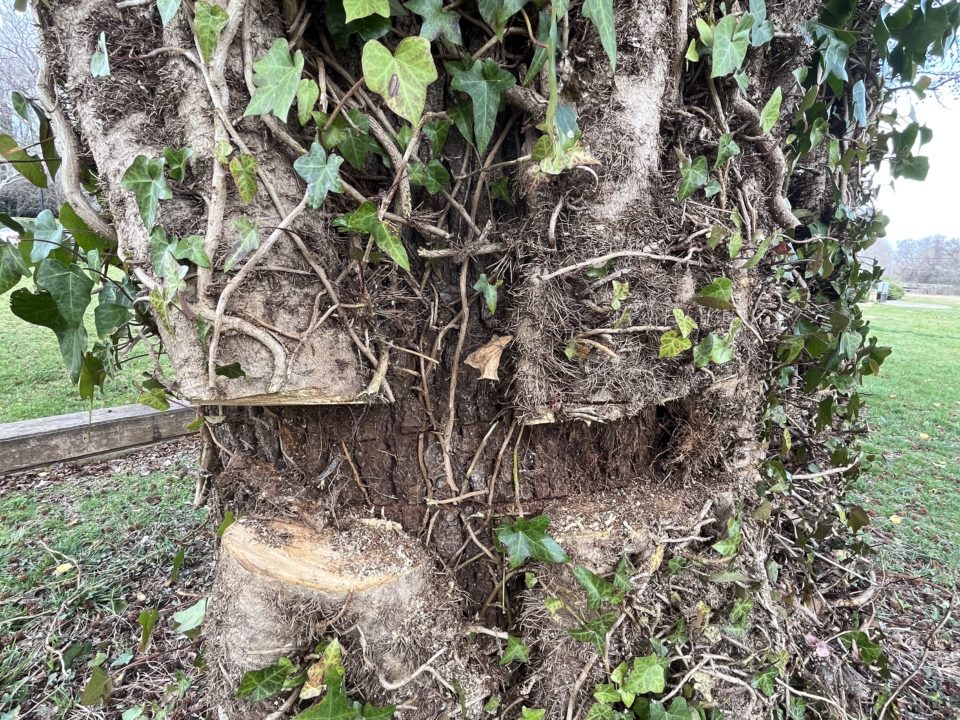Frost Damage in Trees
Frost Damage in Trees
Winter has returned to Charlotte once again after a very early warm spell in February/early March. Over the last few days, we’ve seen evening temperatures dip below freezing, which isn’t unusual for this time of year, but it can have implications for trees and plants that have started to wake up out of dormancy due to the “false spring” we had a few weeks ago. Frost damage to trees is typically nothing to worry about, but it’s important to know how to identify it and what to do to protect your trees from late season cold weather.

Identifying frost damage:
If your tree has started to bloom or leaf out, you may see evidence of frost damage. You’ll typically find leaves or petals that are wilted, shriveling and crispy, often with brown or black blotches around the edges. Some leaves may turn completely brown. Overall, the frost damage looks very similar to symptoms of underwatering. The photos to the right show frost damage in a sycamore maple (a), European beech (b) and Norway spruce (c).
What to do once you’ve detected frost damage:
There isn’t much you can do once frost damage has occurred, but rest assured that your tree will likely recover. As winter melts into spring, new growth will push out the dead, damaged leaves and they will fall off naturally. There is no need to remove the leaves and flowers that have been damaged. However, there are steps you can take to mitigate further frost damage…
How to limit frost damage:
- Water: Watering your tree before the threat of frost will help your tree combat damage. Roots that freeze wet recover better than roots that freeze dry, and healthy roots means a healthy tree.
- Mulch: Your tree should have mulch around it year-round, but if it doesn’t, now is the time to apply some. Like leaves on the forest floor, mulch helps keep the ground warm in winter and the tree’s roots moist.
- Cover: If you tree is smaller and already has flowers or leaves that you want to protect, you can try covering it in the evening before spring nights that are expected to get below freezing. You can use any material you have on hand, like a sheet, burlap, or tarp.

